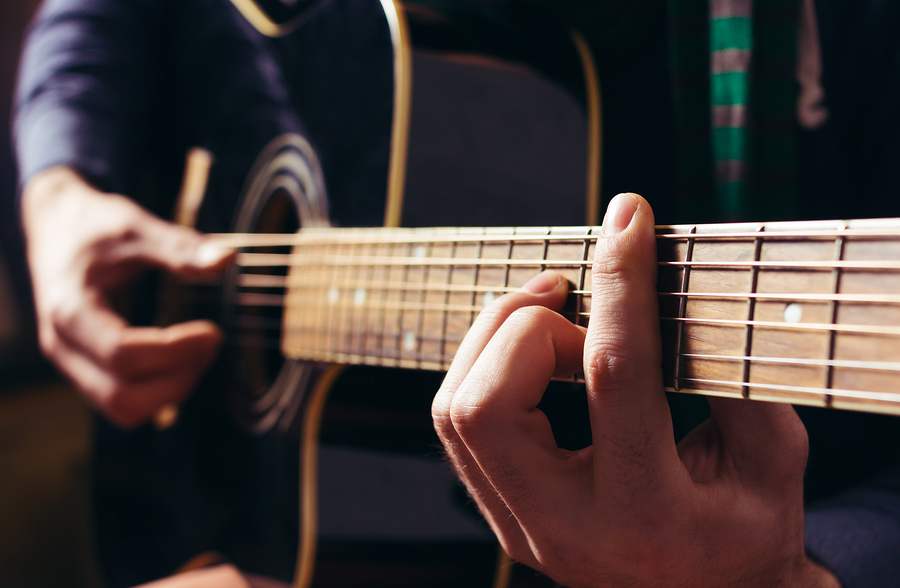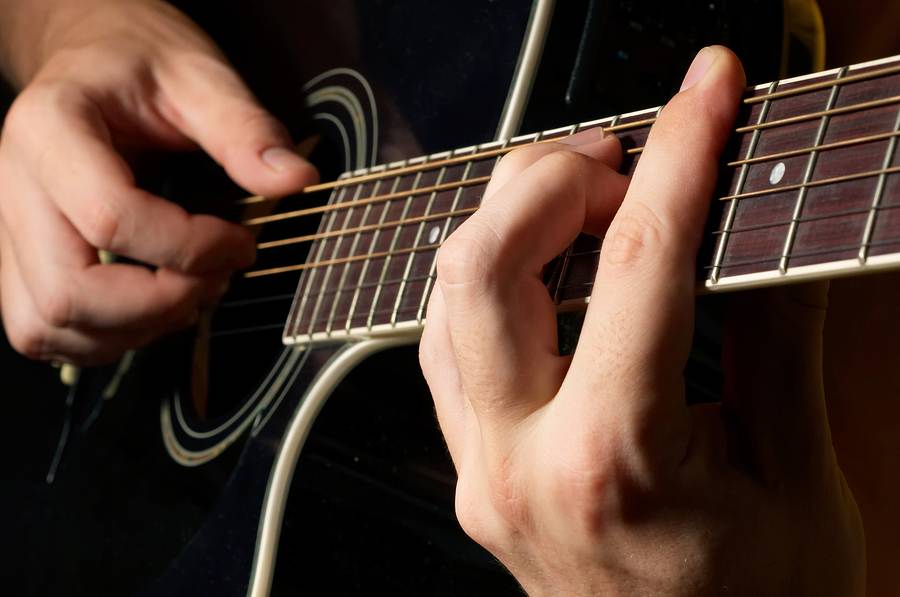Bigstock photo
 Getting a barre chord to sound good is a real struggle for many guitar students, especially on an acoustic guitar.
Getting a barre chord to sound good is a real struggle for many guitar students, especially on an acoustic guitar.
It takes a while to really get a barre chord to sound clean and clear. Let’s be honest here, barres are nasty pain in the &ss and can be pretty frustrating at first.
It almost feels like impossible to apply the amount of pressure on the fingers to get them sound smooth.
But don’t worry, if you follow the tips and exercises in this post, it’s gonna get better, a lot better. If fact, you’re gonna do great!
The trick is not just about pressing hard. There’s more to it. Yes, it is important to press your index finger firmly down on the strings in order to make it work, but then again, you don’t want to push too hard either. You need to find the right balance. Whatever you do, do not strain! Don’t be a wimp, but if you’re feeling cramps just let go for a minute.
Watch the positioning of your fingers. Alter the positioning of your index finger slightly up or down to see if you can fix some of the buzzes and mutes. Try rolling it to the sight a bit. Make sure your thumb is right behind the neck to give it enough support. Observe all your fingers and hand position carefully.
Don’t expect your barres to sound great in the beginning, it’s part of the process. Your fingers need to build strength but also learn to shape the right way. It takes some time for your fingers to find the right placement onto the strings. So it’s not just a matter of strength but also technique and the latter takes practice and patience.Continue Reading


 Whenever you try to deepen your guitar knowledge and you buy a guitar music theory book or look up something on the internet you keep bumping into the CAGED system.
Whenever you try to deepen your guitar knowledge and you buy a guitar music theory book or look up something on the internet you keep bumping into the CAGED system.